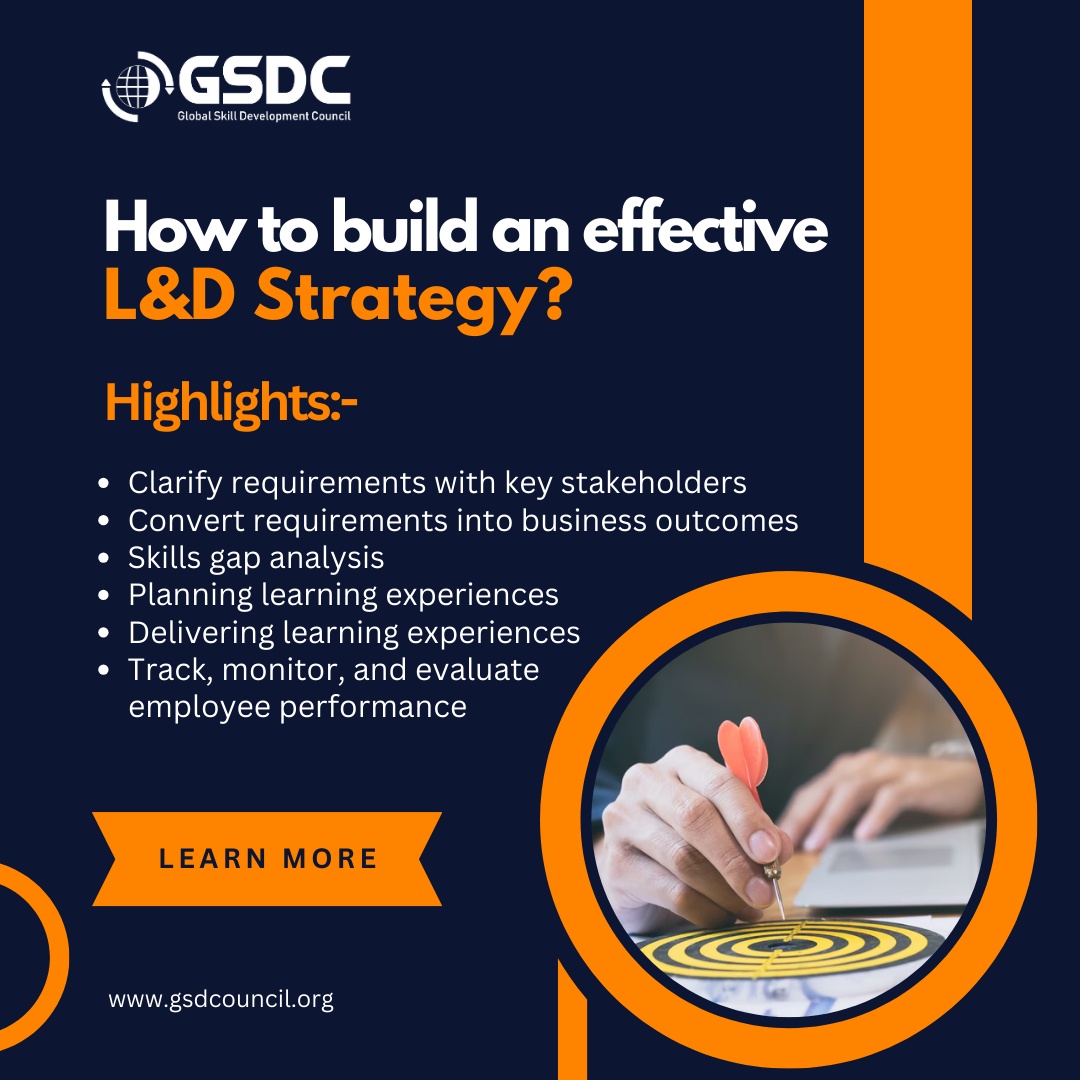The Learning and Development Certification aids in the development of these abilities. With the use of these abilities, professionals can plan, carry out, and assess successful learning initiatives that improve performance on both an individual and organisational level and advance the general success of their companies. L&D professionals need a broad range of skills, including instructional design, training delivery, needs assessment, learning technology, performance management, and talent development techniques.
CLDP certification programs cover talent development strategies, equipping individuals with the skills to design and implement comprehensive talent development programs that support organizational goals and objectives. This includes understanding talent management principles, identifying high-potential employees, designing career development plans, succession planning, and implementing employee engagement initiatives. Talent development strategies skills enable professionals to foster a culture of learning and growth within their organizations and develop talent pipelines for future leadership roles.
Building an effective Learning and Development (L&D) strategy is essential for organizations to enhance employee skills, improve performance, and achieve business objectives. Here's how to build an effective L&D strategy, explaining each point in detail:
Clarify requirements with key stakeholders:
Start by engaging with key stakeholders, such as department heads, HR professionals, and senior leadership, to understand organizational goals, challenges, and priorities. Clarify their expectations and requirements for L&D initiatives, including specific skill gaps, performance issues, and strategic objectives. By aligning the L&D strategy with organizational needs from the outset, you ensure that learning initiatives are relevant, impactful, and aligned with broader business goals.
Convert requirements into business outcomes:
Translate the identified requirements and objectives into measurable business outcomes. Define clear, actionable goals that tie back to organizational priorities and contribute to tangible results, such as increased productivity, improved customer satisfaction, reduced turnover, or enhanced profitability. By articulating the desired business outcomes, you provide a clear direction for L&D initiatives and demonstrate their value in driving organizational success.
Skills gap analysis:
Conduct a comprehensive skills gap analysis to identify the knowledge, skills, and competencies that employees need to fulfil their roles effectively and support organizational objectives. Assess current skill levels against desired proficiency levels, considering both technical and soft skills. Use a variety of methods, such as surveys, assessments, performance reviews, and interviews, to gather data and identify areas for development. The skills gap analysis forms the foundation for designing targeted learning interventions that address specific competency gaps and support employee growth.
Planning learning experiences:
Based on the findings of the skills gap analysis, develop a plan for designing and delivering learning experiences that address identified needs and objectives. Consider various learning modalities, such as instructor-led training, e-learning modules, workshops, simulations, on-the-job training, and coaching, to create a blended approach that meets diverse learning styles and preferences. Tailor learning experiences to the needs of different employee groups, roles, and levels within the organization to ensure relevance and effectiveness.
Delivering learning experiences:
Implement the planned learning experiences, ensuring that they are delivered effectively and efficiently. Provide employees with access to high-quality learning resources, materials, and support systems to facilitate their learning journey. Engage experienced trainers, subject matter experts, and facilitators to deliver training sessions and provide guidance and feedback to learners. Leverage technology, such as learning management systems (LMS), virtual classrooms, and online collaboration tools, to facilitate remote and self-paced learning experiences.
Track, monitor, and evaluate employee performance:
Continuously track and monitor employee performance throughout the learning process to assess progress, identify areas for improvement, and measure the impact of L&D initiatives. Use key performance indicators (KPIs) and metrics aligned with business outcomes to evaluate the effectiveness of learning interventions. Solicit feedback from learners, managers, and stakeholders to gather insights into the perceived value and impact of L&D initiatives. Adjust the L&D strategy as needed based on feedback and evaluation results to ensure ongoing alignment with organizational goals and priorities.
Building an effective L&D strategy involves clarifying requirements with key stakeholders, converting requirements into business outcomes, conducting a skills gap analysis, planning learning experiences, delivering learning experiences, and tracking, monitoring, and evaluating employee performance. By following these steps and maintaining a focus on alignment with organizational goals, organizations can develop L&D strategies that drive employee development and contribute to overall business success.


No comments yet